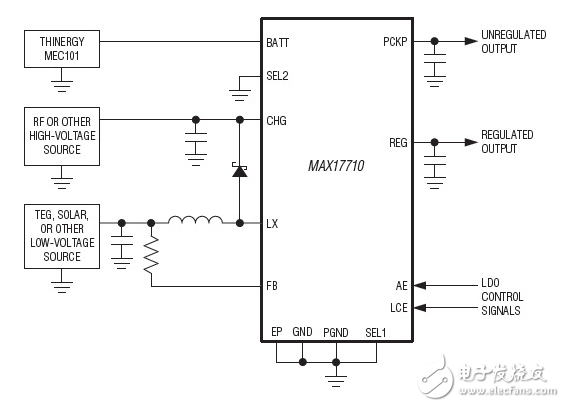
资料下载

用于能量收集应用的电源管理IC的选择
用于能量收集应用的电源管理IC的选择
电源管理IC(PMIC)支持和管理传感器和能量采集通道、储能元件(电池,传统的电容器或超级电容器),和处理器/无线链路。这种能量收集设计的关键块实现了几个主要功能:
捕捉和提取随机,从源传感器微小的能量
将提取的能量转换为存储元件的能量,通常是通过DC / DC转换器。
管理来自存储元件的电源流出,同时确保当存储的能量低于阈值且不会被浪费时,电源不会被抽出。
也许最具挑战性的,它必须管理它自己的启动顺序从转型的时候有足够的可用存储的能量为PMIC本身
用于能量收集系统的设计师,也有好消息:对PMIC的更多的选择,现在可以从供应商,每个具有不同的属性和特点。有些是为一个特定的收获源优化,而其他人更一般;有些实现是PMIC作用的一部分,而其他人将更多的基本功能。

Engineers should always keep in mind that all energy-harvesting designs are based on one principle – to accumulate over time the trickle of minuscule, sporadic energy from the source, store it, and then release it as a power pulse when needed by the rest of the system for data collection, analysis and transmission. Therefore, there are long quiescent periods when the PMIC‘s only activity is to allow the energy to flow to the storage element and little else, as well as periods when there is no incoming energy.
You must also be aware that a conventional DC/DC switching converter core, no matter how efficient, is generally not a good choice for energy harvesting. This is because these are designed to work with a consistent source such as battery, which is a low-impedance, somewhat regulated source. Further, the DC/DC switching converter of a PMIC must have extremely low quiescent current requirements, as there may be long periods without available source energy and thus no power-converter activity.
声明:本文内容及配图由入驻作者撰写或者入驻合作网站授权转载。文章观点仅代表作者本人,不代表电子发烧友网立场。文章及其配图仅供工程师学习之用,如有内容侵权或者其他违规问题,请联系本站处理。 举报投诉
- 相关下载
- 相关文章






